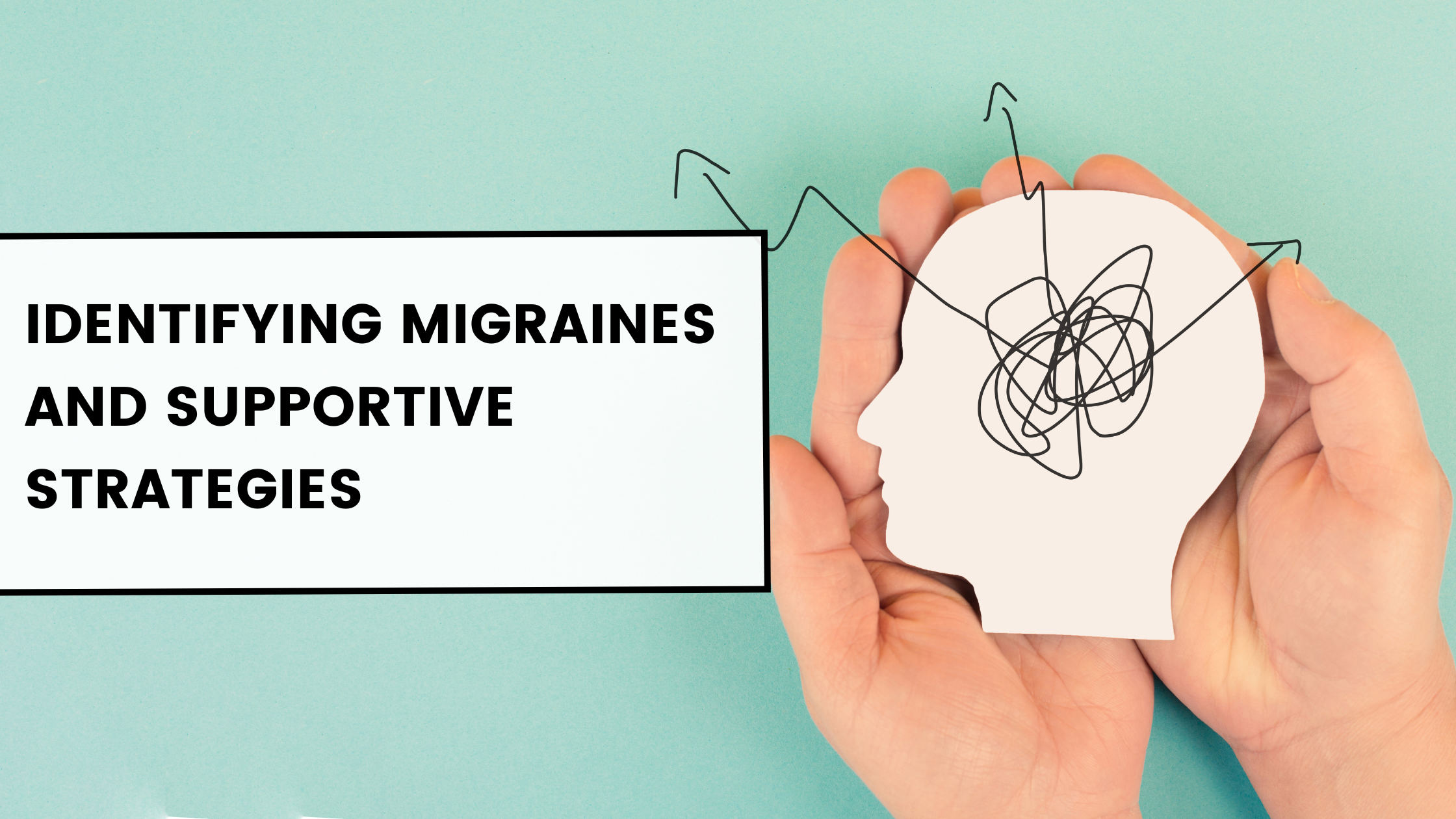Identifying Migraines and Supportive Strategies
As of January 2022, it's estimated that around 39 million people in the United States suffer from migraines. With at least 4 million of those being chronic.
The exact cause of migraines is not fully understood, and they are likely to result from a combination of genetic, environmental, and neurological factors.
Common contributors are:
Genetics: There is evidence that migraines can have a genetic component. If a person has a family history of migraines, they may be more predisposed to experiencing them.
Neurological Factors: Migraines are considered a neurological disorder involving abnormal brain activity. Changes in neurotransmitter levels, such as serotonin, may play a role in the initiation of migraines. Migraines were historically thought to involve changes in blood vessels, with initial constriction followed by dilation. However, recent research suggests that the vascular changes are secondary to neurological events.
Central Nervous System Sensitivity: Individuals with migraines may have an increased sensitivity to stimuli, known as central sensitization. This heightened sensitivity can make them more susceptible to triggers.
Brainstem and Cortical Hyperexcitability: Some studies suggest that abnormal functioning in the brainstem and higher brain areas may contribute to migraines. This hyperexcitability could lead to the initiation of migraine attacks.
It's important to note that the specific causes and triggers can vary among individuals. Migraines are a complex and multifaceted condition, and what may trigger a migraine in one person may not affect another. Additionally, the understanding of migraines continues to evolve as research in this field progresses. If someone is experiencing frequent or severe migraines, it is advisable to consult with a healthcare professional for proper diagnosis and personalized management strategies.
Migraines can manifest in various ways, and there are different types of migraines.
Here are some common types:
Migraine without Aura: This is the most common type of migraine. People experience moderate to severe headache pain that is usually on one side of the head, along with other symptoms like nausea, vomiting, and sensitivity to light and sound.
Migraine with Aura: Some people experience specific warning signs or auras before the migraine headache begins. Auras can include visual disturbances, such as flashing lights or blind spots, and other neurological symptoms such as changes in smell or taste.
Menstrual Migraines: Some women experience migraines that are linked to their menstrual cycle. These migraines typically occur in the days before, during, or after menstruation.
Vestibular Migraines: These migraines are associated with dizziness and problems with balance. People with vestibular migraines may experience vertigo or a spinning sensation.
Cluster Headaches: While not technically migraines, cluster headaches share some similarities. They involve severe pain on one side of the head, often around the eye, and occur in clusters over a period, followed by headache-free periods.
Hemiplegic Migraines: This rare type of migraine is characterized by temporary paralysis or weakness on one side of the body before or during the headache.
Ocular Migraines: These migraines affect vision and can cause temporary vision loss or visual disturbances in one eye.
Managing migraines often involves a combination of lifestyle adjustments, supplements, and other therapeutic approaches.
Common management strategies include:
Identify Triggers:
Keep a migraine diary to track potential triggers such as certain foods, sleep patterns, stress, hormonal changes, or environmental factors. This may mean avoiding common foods like chocolate, caffeine, alcohol and other inflammatory foods.
Environmental Triggers: Certain environmental factors can trigger migraines, including bright lights, loud noises, strong odors, and changes in weather or barometric pressure.
Hormonal Changes: Hormonal fluctuations, particularly in women, can contribute to migraines. For some, migraines may be associated with menstruation, pregnancy, or menopause.
Stress: Emotional stress and changes in stress levels can be a significant trigger for migraines.
Once you have the awareness, you can make empowered choices to prevent migraines.
Lifestyle Modifications:
Maintain a regular sleep schedule and ensure you get an adequate amount of sleep. Up to 8-9 hours of sleep a night is optimal for most people.
Stay hydrated! Dehydration can contribute to migraines. Aim for at least 64 ounces of water a day, but ideally more like 90-100 ounces. Adding minerals, such as LMNT packets, can support your body’s ability to absorb water.
Manage stress through relaxation techniques, such as meditation, deep breathing, or yoga.
Bodywork:
Integrative Dry Needling - the insertion of very thin needling into the skin and fascia of the head and neck improves blood flow and reduces tissue tension
Chiropractic - specific adjustments to support the nervous system and re-integrate the eyes and neck together.
Functional Neurology - the use of targeted exercises and therapies to improve neurological function. This could involve specific movements, eye exercises, or other interventions to enhance the brain's ability to regulate various functions.
These are foundational tools for support, but it's important for individuals with migraines to work closely with their healthcare providers to develop a personalized treatment plan that addresses their specific needs and triggers. What works for one person may not work for another, so a tailored approach is crucial.
Do any of these types of migraines or symptoms sound familiar to you?
At Nashville Brain and Body, we love working with patients through all of these management strategies.


